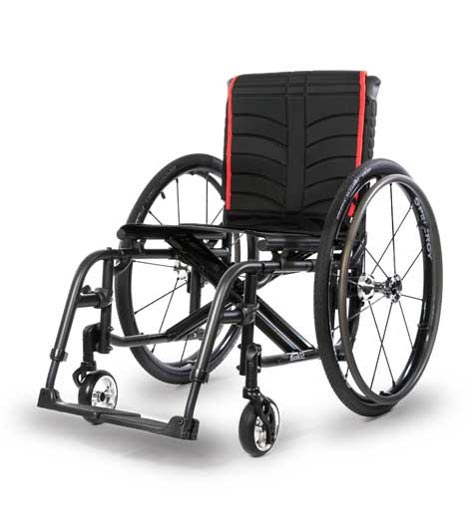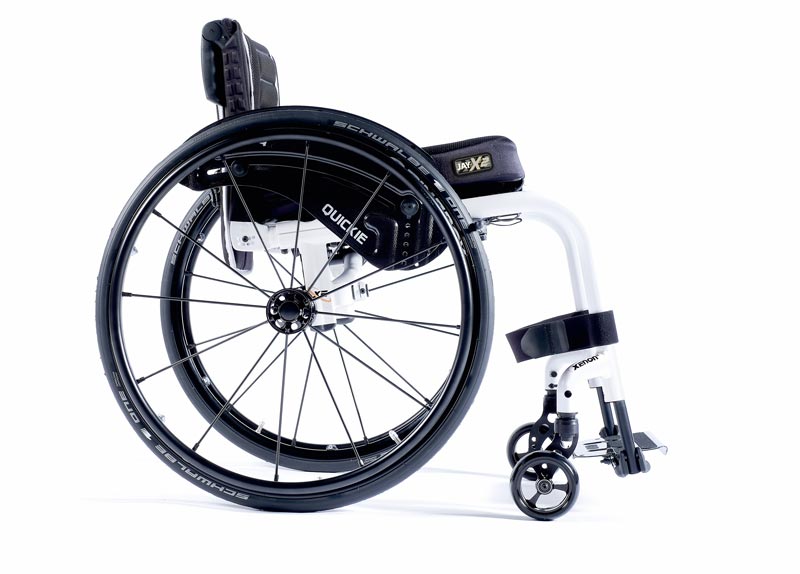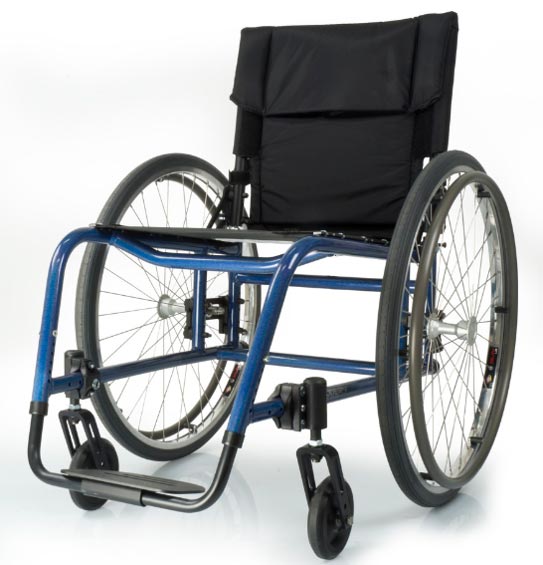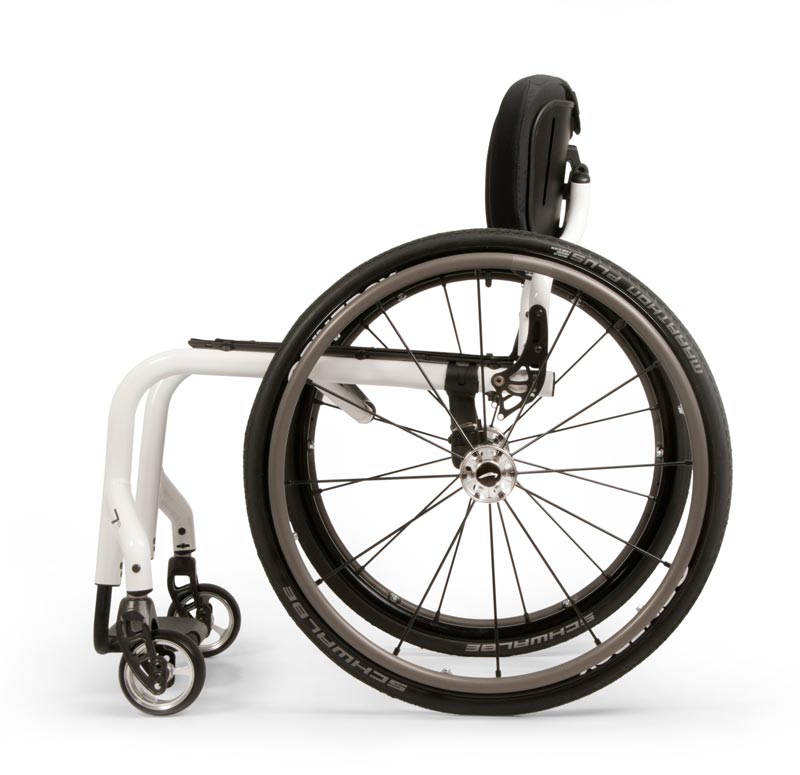The range of active user ultralight manual wheelchairs currently on the market is formidable. Each varies in frame design and configuration, weight, adjustability, and the available accessories. So, where do we start when making our recommendations?
A review of the literature recommends a manual wheelchair is as light as possible, durable, and tailored to meet the specific mobility and postural needs of its user.1, 2, 3
The ergonomic recommendations include minimizing the stroke frequency, minimizing the forces generated during propulsion, and minimizing extreme or potentially injurious positions.
In this article we are going to take a look at frame styles as they relate to the above recommendations.
When recommending a style of frame, important considerations may include:
Usage
- Terrains and surface types?
- Average distance of daily propulsion?
- Lifestyle and personality (e.g. daring and fast paced vs. calm and slower paced)?
Functional Capacity of the Client
- Posture?
- Trunk balance?
- Propulsion style?
- Transfer style?
Transport
- Driving from the wheelchair?
- Transfer considerations?
- Disassembling the wheelchair?
- Location of the wheelchair in the car?
- Loading the wheelchair? Who? How?
Potential for Change
- Functional abilities? Increase or decrease?
- Client size? Weight?
With all of that in mind, let's consider what the most common frame types have to offer:
Traditional Folding Frame Wheelchairs

Claims to Fame:
- Folding style - Folds in half with an "X" cross brace. This style can be considered easier to transport and store because of how thin the frame becomes once it is folded.
- Adjustable configurations - Most allow rear wheels to be moved to adjust the center of gravity (CoG) and seat slope, enhancing both sitting comfort and propulsion power. In addition, axle plates are designed to move the CoG further rearward, which increases stability for users with lower extremity amputations.
- Modularity - Typically, this frame style is able to be adapted via new parts which can be ordered to change the size (width, depth) of the chair to meet the needs of a client whose size or functional ability changes.
- Component options - This style of frame commonly boasts the highest number of component and accessory options. For example, the QUICKIE 2 boasts over 100,000 different combinations.
- Front end - This frame offers the ability to choose between a fixed front frame (platform foot support, lighter weight, and more solid feel) or swing-away (individual hangers and foot plates for each leg, can be moved to removed to assist with transfers).
- Foot propulsion - Accommodations can be made int he frame to allow for an ultra-low seat-to-floor height to allow for foot propulsion.
Considerations:
- Folding frame wheelchairs can reduce efficiency of the propulsion - there is energy transfer loss across the different frame components.
- Modularity and increased options require more parts and pieces which can add more weight to the complete package of the wheelchair and seating system.
- Might require more maintenance as there are more moving parts.
Open Frame Folding Wheelchairs

Claims to Fame:
- Folding style - Folds in half with an "X" cross brace. Some offer a fold-down back option, too.
- Easier to transport as lower section of frame is absent and cross brace is more compact when compared to traditional folding frames.
- Lighter weight when compared to traditional folding frames.
- Less energy loss in propulsion as compared to traditional folding frame because cross brace/seat rail technology rigidizes the frame.
- Adjustable configurations - Most allow rear wheel to be moved to adjust CoG and seat slope.
- Can choose front end type - Rigid for more solid ride feel & lighter frame, or swing-away for easier transfers.
Considerations:
- Folding mechanism adds weight when compared to a rigid frame.
- Folding mechanism creates a small reduction in pushing efficiency.
- Less frame rigidity when compared to a rigid chair.
- Has less growth potential as compared to a traditional folding wheelchair.
Closed Frame Rigid Wheelchairs

Claims to Fame:
- Considered to offer the most rigid ride.
- Increased rigidity results in improved energy transfer of push to moving the chair, resulting in more efficient propulsion.
- Lighter frame when compared to folding frames - due to fewer parts.
- Adjustable configurations - most allow rear wheel to be moved to adjust CoG and seat slope.
Considerations:
- Generally, no size adjustability in the frame.
- Frame doesn't fold in half; however, some offer a back that can fold down.
- Might be most difficult to load into a car as frame is bigger than comparable open frame rigid wheelchairs.
- More difficult for standing transfers - Most of these chairs to not have swing-away leg supports. The front end is fixed in position. However, some offer swing-away or flip-back foot supports.
Open Frame Rigid Wheelchairs

Claims to Fame:
- Typically, lightest of the frame styles, because there is less material utilized in the frame.
- Increased rigidity results in improved energy transfer of push to moving the chair, resulting in more efficient propulsion.
- Easier to transport as lower section of frame is absent. Often clients can manage to self-load this type of frame by bringing it across their body.
- Adjustable configurations - Most allow rear wheel to be moved to adjust CoG and seat slope, enhancing both sitting comfort and propulsion efficiency.
- Typically, less maintenance required as compared to folding chairs as there are fewer moving parts.
Considerations:
- Typically, minimal growth or adjustability in this type of wheelchair frame.
- Frame doesn't fold in half; however, some offer a back that can fold down.
- More difficult for standing transfers - Most of these chairs do not have swing-away leg supports. The front end is fixed in position. However, some offer flip-back foot supports.
Remember, we're asking these wheelchairs to serve clients for multiple years, across many environments, and across varied applications. Frame style is just one part of the ultralight wheelchair decision-making process: design, configuration, and accessory choices are just as important.
Amy Bjornson
BS, MPT, ATP, SMS - Clinical Education Manager, Asia-Pacific
Resources
- Medicine CfSC. Preservation of Upper Limb Function Following Spinal Cord Injury: A Clinical Practice Guideline for Healthcare Professionals. Paralyzed Veterans of America 2005.
- Boninger ML, Koontz AM, Sisto SA, Dyson-Hudson TA, Chang M, Price R et al. Pushrim biomechanics and injury prevention in spinal cord injury: Recommendations based on CULP-SCI investigations. J Rehabil Res Dev 2005;42(3 Suppl 1):9-20.
- RESNA Position on the Application of Ultralight Manual Wheelchairs, March 2012